This article was co-authored by Laura Marusinec, MD. Dr. Marusinec is a board certified Pediatrician at the Children's Hospital of Wisconsin, where she is on the Clinical Practice Council. She received her M.D. from the Medical College of Wisconsin School of Medicine in 1995 and completed her residency at the Medical College of Wisconsin in Pediatrics in 1998. She is a member of the American Medical Writers Association and the Society for Pediatric Urgent Care.
There are 8 references cited in this article, which can be found at the bottom of the page.
This article has been viewed 86,368 times.
Ringworm is a rash-like condition caused by a fungus. It can occur on the skin of any part of the body. Ringworm is most common in school-aged children, but infants can get ringworm, too. Treating ringworm is not a difficult process and can be mostly done with at-home methods. Learn how to treat ringworm in your baby so she can heal as quickly as possible.
Steps
Visiting Your Doctor
-
1Recognize the symptoms of ringworm. If your baby has ringworm, he made have round rash spots on his skin. These rashes will be red or pink in color and have scaly and raised borders. The center of the rash may also be scaly or it may be smooth. The rash spots usually are between half an inch to an inch; however, they will slowly grow larger.
- You may notice that your baby is itching the areas where the rash is.
- Ringworm may be confused with some kinds of eczema in infants.
- Ringworm is more common in children in school than in babies.
-
2Visit the doctor. If your baby has ringworm, the first thing you should do is take her to the pediatrician. The doctor can examine the infected areas and be able to diagnose the ringworm by sight. They can tell you if the rash is in fact ringworm or if it is another condition.[1]
- You should make sure to take your baby to the doctor if the ringworm is on the scalp.
- Never try to treat your baby’s ringworm at home first before taking her to the doctor. You might misdiagnose the ringworm or not use a remedy strong enough to get rid of it, which could cause the condition to worsen.
- Not all medicines are approved for infants. Your doctor will recommend those approved for your baby.
- Some cases of ringworm may present cause for immediate medical treatment. Seek medical treatment if your baby's ringworm has any pus coming from the rash or redness around the rash, the rash is still spreading after a week of treatment, the rash has persisted for more than four weeks, your child has additional spots popping up on her body, or your child’s condition worsens.
Advertisement -
3Ask questions. When you go to the doctor, you should ask him questions. Ask him if the rash is ringworm or something else. Take notes on what the doctor tells you about your baby's infection. Ask for clarification on anything that doesn't make sense to you.
- If your doctor doesn't tell you which cream to use, you should ask him to recommend or prescribe an antifungal cream.
- Make sure to write down your doctor's instructions for treating your baby carefully so you can treat it correctly at home.
Treating Ringworm
-
1Apply antifungal cream. If your baby has ringworm, your doctor will more than likely suggest an over-the-counter antifungal cream. This will help to kill the fungus causing the rash. Common brands of creams include Lamisil, Micatin, and Lotrimin. You can spread the cream over the rash. Make sure to spread at least one inch beyond the edge of the rash spot.
- Use the cream twice a day. Make sure to keep using the cream for a week after the rash has cleared up or until your doctor tells you to stop. It usually takes two to three weeks to completely clear up.
- Make sure to wear gloves when you apply the cream. This will minimize your chance of catching ringworm or spreading it to other family members.
- If you don't wear gloves, wash your hands thoroughly before and after applying the cream — including under the nails.
- You may also use antifungal lotions or powders.
-
2Treat scalp ringworm. Scalp ringworm can be a lot more difficult to get rid of than ringworm on other parts of the body. If your baby has ringworm on the scalp, your doctor will probably prescribe something stronger than over-the-counter creams. The child will usually be prescribed an oral antifungal, which may be administered for four to eight weeks.[2]
- The doctor will probably also give you a special shampoo to wash your baby’s hair with to help get rid of the fungus and reduce contagiousness.
-
3Make a garlic paste. Garlic has antifungal properties that can help treat the fungus responsible for ringworm. You can make a paste with crushed, raw garlic to spread over the rash. Crush two cloves of garlic and mix it with a carrier oil, like almond oil. Spread this paste onto the rash. Let it sit for 10 minutes before washing it off with warm water.[3]
- You can do this two times a day.
- You can also use garlic oil. Add two to three drops of garlic oil to four tablespoons of almond oil. Apply the mixture on the rash. Leave for 10 minutes, and then rinse with warm water. You can do this two times a day.
- Make sure to test any paste or oil mixture on a small patch of your baby’s skin before using it. Your baby’s skin may too sensitive for the garlic.
- Make sure that you consult your doctor before using any natural, at-home remedies.
-
4Try coconut oil. Coconut oil has antifungal properties which can help to kill the fungus responsible for ringworm. Make sure to use coconut oil that is unrefined and not hydrogenated. You can spread the coconut oil over the ringworm and leave overnight.[4]
- You can apply coconut oil once every day.
Preventing the Spread of Ringworm
-
1Sanitize the environment. If your baby has ringworm, you should clean all the surfaces in your house. This includes floors, counters, and cabinets. You should also disinfect the things that your baby touches often, like walkers, strollers, car seats, high chairs, and even toys.[5]
- Try using a disinfectant, like Lysol, or another safe cleanser that will get rid of fungi or that has antifungal properties.
- If your baby has ringworm on the scalp, you want to make sure to disinfect or toss out any items that come in contact with her hair or head. This includes combs, brushes, hair bows, headbands, or hats.[6]
- To avoid ringworm, discourage any sharing of hair or head items with children who are not family members.
- You should also wash and sanitize any towels you use to dry your baby’s hair or head.
- Wash the child’s bedding in hot water to get rid of any fungus that may have been transferred.
-
2Contact the daycare. If your baby goes to daycare, you should contact the daycare to let them know about your baby’s ringworm infection. The baby may have gotten the infection at the daycare and may potentially spread the ringworm to other children. Talk to the daycare about the measures you are taking to treat the ringworm.[7]
- If you believe your baby got ringworm at daycare, you may want to discuss with the child care providers what measures they are taking to ensure that your baby stays safe.
-
3Treat any pets. If you think your baby may have gotten ringworm from a pet, you should take your pet to the vet. Both dogs and cats may transfer ringworm to a human. You should take your dog or cat to the vet to get him checked out for any ringworm infection, and then treat the pet if he is infected.[8]
- If your baby got ringworm from an animal, she will not be able to transfer it to another human because it is a different type of ringworm.
-
4Learn how ringworm is spread. Ringworm is most commonly spread through direct contact with an infected person. This is why it is less common in babies than school children; however, your baby can catch ringworm by interacting with other children with ringworm. He may also catch it by crawling across or touching an infected surface.[9]
- Your baby may also get ringworm from pets since dogs and cats both carry ringworm fungus.
- Ringworm is usually no longer contagious after about 48 hours of treatment.
References
- ↑ http://www.babycenter.com/0_ringworm-in-babies_10902.bc?page=2#articlesection5
- ↑ http://www.childrenshospital.org/conditions-and-treatments/conditions/r/ringworm/treatments
- ↑ http://www.uofmhealth.org/health-library/hn-2093008
- ↑ http://www.nutrition.org/asn-blog/2009/07/coconut-oil/
- ↑ http://life.familyeducation.com/ringworm-children-babies.html
- ↑ http://www.babycentre.co.uk/a548378/ringworm
- ↑ http://www.nhs.uk/conditions/Ringworm/Pages/Introduction.aspx
- ↑ http://www.nhs.uk/conditions/Ringworm/Pages/Introduction.aspx
- ↑ http://www.thebump.com/a/ringworm-baby



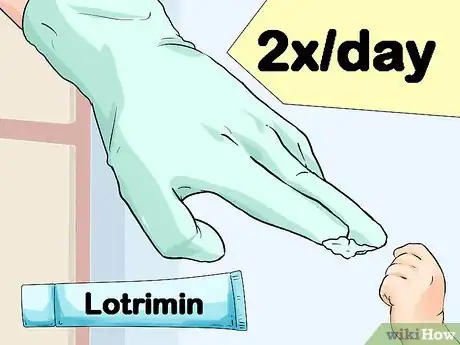

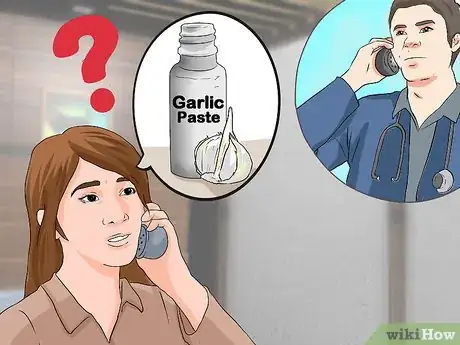

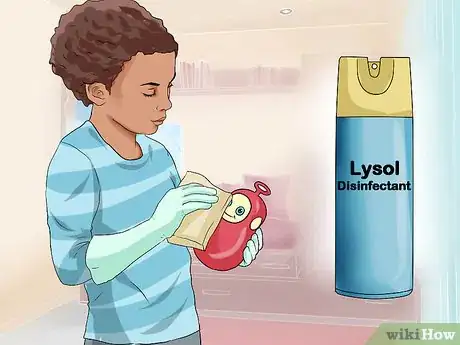

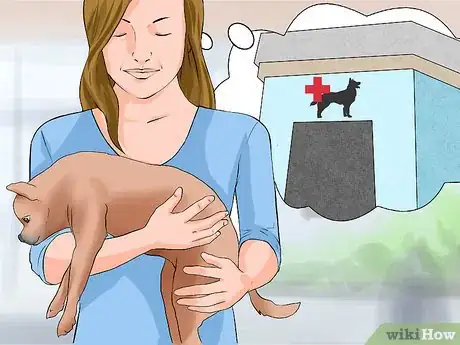
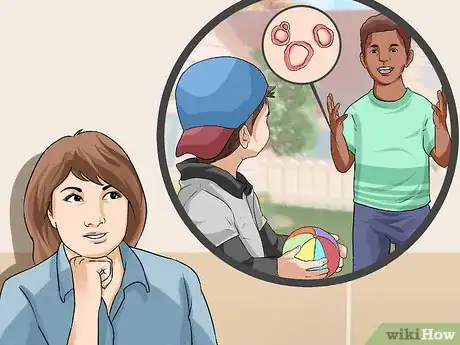

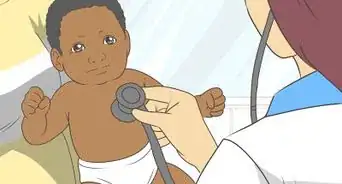


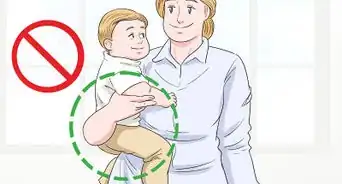



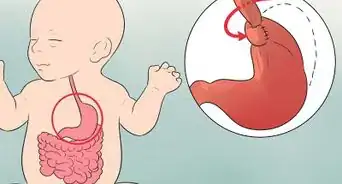
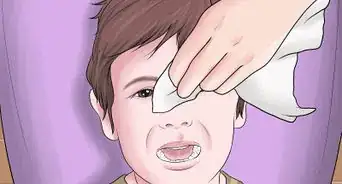
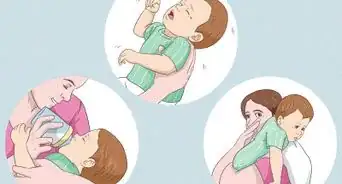
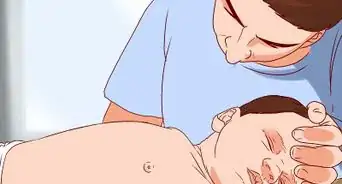
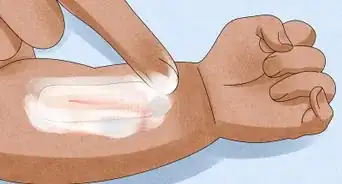











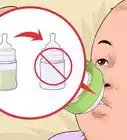



































Medical Disclaimer
The content of this article is not intended to be a substitute for professional medical advice, examination, diagnosis, or treatment. You should always contact your doctor or other qualified healthcare professional before starting, changing, or stopping any kind of health treatment.
Read More...